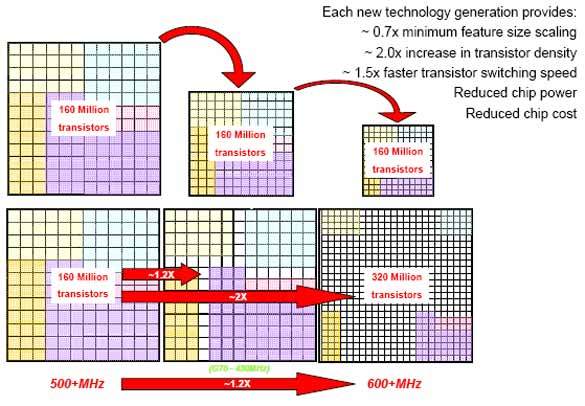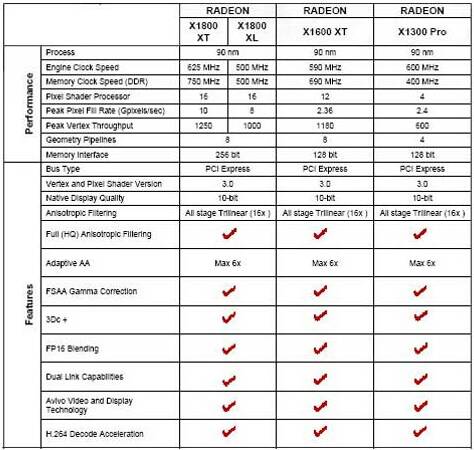ATI Enters The X1000 Promised Land
ATI Moves To 90nm
The X1000 series is a new design from the ground up. The further graphics technologies move into the future, the harder it becomes to understand all of the mechanics that make a card do what it does. It wasn't too long ago that we demanded programmable logic. However, once we got it, people started saying that one company or another was cheating. No, that is what you asked for and company 'X' used it to their advantage and yours. Today ATI has changed the face of graphics again in this latest design.
ATI decided to migrate to a 90-nm process. This one, like all other die shrinks, has two distinct advantages. The first is that there is less silicon used to make the same identical part at the smaller process. That means that depending on the amount the die shrinks, you could even get twice as much into the same area before. This is what happened in this generation of cards. The second is that all of the circuitry has much shorter distances to travel and the maximum achievable frequencies that is much higher. By going smaller you can effectively go faster and do more, with less.
ATI created the entire x1000 family with the same 90-nm process. Why should only the high performance models get the benefit? With the new process, ATI felt that all of the cards should have some core functionalities. We are happy that they chose to do this too.
Get Tom's Hardware's best news and in-depth reviews, straight to your inbox.

